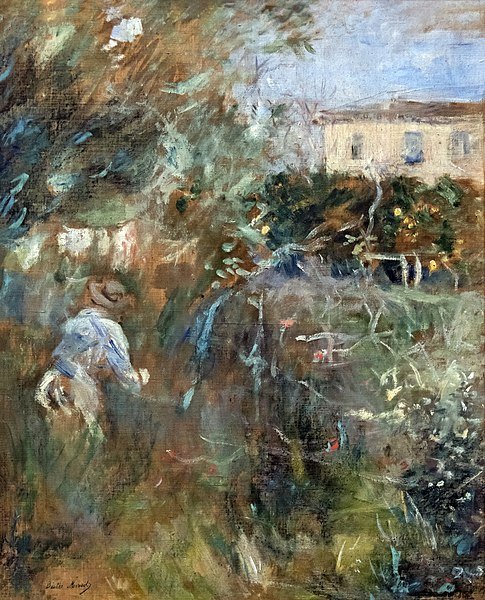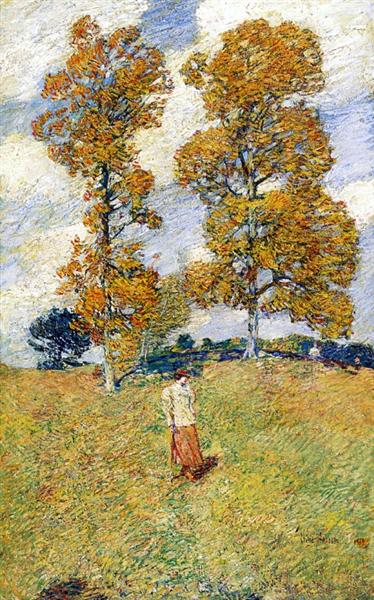 Murder on the Links: “It was 2 p.m. on the afternoon of May 7th, 1915.”
Murder on the Links: “It was 2 p.m. on the afternoon of May 7th, 1915.”
Detective: Hercule Poirot
Published: 1923 (Christie’s 3rd published book)
Length: 272 pages
Setting: Merlinville-sur-Mer, France (fictional)
This is Agatha Christie’s third published novel after The Mysterious Affair at Styles and The Secret Adversary, and her second one featuring the astute Belgian detective, Hercule Poirot. Quite honestly, this novel falls far short of her initial two attempts, her adept plotting of a mystery surprisingly lacking as the murder and motive is revealed in a rather bumbling fashion. But for now, let’s look at the plot.
Hercule Poirot receives a letter from Monsieur Paul Renauld requesting his help and confidence at his home in France and, with Captain Hastings by his side, Poirot immediately departs for the continent. Tragically, upon arrival, Poirot and Hastings learn that Renauld was murdered earlier that morning and the local Sûreté police force are on the case. An interviewing of the maid, his two daughters, and wife yield that he was visited by a woman the night before but there are conflicting reports as to the woman’s identity. His son is on his way to Chile, a country where Renaud previously lived, sent by an urgent message from his father. And to throw more confusion into the mix, Renaud’s wife claims that masked men broke into the villa and must be responsible for her husband’s death, his body discovered lying beside a newly dug grave close to the golf course.
Who is lying? Who is covering up the truth, not necessarily for nefarious purposes but possibly to protect the innocent? And why does that annoying inspector Giraud of the Sûreté continually mock Poirot and in his arrogance, boldly displays his superior detection skills that appear to impress everyone? It’s a mish-mash of circumstances and suspects with everything thrown in but the kitchen sink. Yet Poirot, with his superior intellect and little grey cells, might be the only one who could figure out this hodge-podge of deductive soup. If he had truly been alive, he might have had a few words to say to Christie about the plotting of this story.
As to my disappointment with this mystery, where do I begin? Well, first of all, do you see the lovely golf course on the cover of the novel? You would expect it has something to do with the plot or murder, or even makes an appearance in the setting of the novel but, other than the body being found on the edge of it, it has so significance at all. Then coincidences abound as chance meetings end up being tied directly to the case, a person directly involved in the death is not introduced until about 2/3 of the way into the story, and other various confusing blots of obscurity are thrown at this masterpiece of mystery. A-hem!

Bemberg Fondation Toulouse – Femme au jardin (Villa Arnulphi à Nice) – Berthe Morisot 1882
source ~ Wikimedia Commons
And, oh my, Hastings! His attitude bordering on arrogance, his criticism of Poirot, his drooling infatuation of females he knows next to nothing about, nearly drove me to distraction! I have to commend Hugh Fraser, the actor who plays Hastings in the BBC series, as he brings a balance to the character and while he is still far inferior to Poirot yet has the qualities imbued by Christie, Fraser at least portrays them in a manner which is charming. So far the book character of Hastings is somewhat maddening and it’s hard to like him. I can only hope for his improvement.
My next Christie read will be a compilation of Poirot stories, Poirot Investigates. And if you want to join Fanda’s Agatha Christie Perpetual Reading challenge, please come along for the ride!



This one I have not read at all and seems like I did not miss much! Also about the Golf Course, forgive me for the cliche, but remember something about judging the book by its cover….lol
For some reason I lost all patience with this novel. And with this one, definitely do not judge by the cover or the words …. Ugh!
splendid pictures: the Morisot is outstanding! and i really like the way you write: wish i could do that; your style flows like water from one subject to another, effortlessly… admirable… i’m not very critical of AC’s books: i like them all, just taking fun from being in her world… it’s been a while since i’ve read her; have to remedy that…
Thanks for the compliment, Mudpuddle! I feel so much like I’m rushing through my writing and am a little out of practice. But one must make the most of the time (or the little time) one has, so I just push through it. And the mysteries are quite easy reviews, not like Tolstoy or Plato, thank goodness!! 🙂
I’m not usually so critical either but this one really got to me. The flow was so erratic with so many clues and false clues thrown in without anything tying them together at times. But I’m enjoying the Poirot short stories I’m reading now better so that’s something …
I don’t believe I’ve ever read this one…the title sounds familiar (but then all of hers do, by now), but the plot not at all. I’m sure I’ll read it someday though, as I think I’m rather fond of the idea of reading all of Christie. By coincidence, I just started The Mysterious Affair at Styles this morning. I’m not very far in, but I do begin to see what you mean about Hastings.
I really enjoyed The Mysterious Affair at Styles and I hope you do too! Yes, Hastings was kind of bothersome in it but nothing to Murder on the Links. As I said in my review, I hope his character improves.
” If he had truly been alive, he might have had a few words to say to Christie about the plotting of this story.”–This line made me laugh!
The only AC I’ve read is And Then There Were None. I should remedy that!
😀
Oh, I loved And Then There Were None but I read it as a teenager …. I wonder what I’d think of it now? And if I continue on this perpetual challenge, I’ll find out. Thanks for visiting, Amy! 🙂
Amy, I tried to post a comment on your blog but I’m not sure if it went through although it might be in moderation. Just wanted to let you know!
Last week I listened to a podcast (Shedunnit) about Golden Age mystery authors, and the episode was about Christie’s famous disappearance, which happened after The Secret Adversary. It sounded to me like she was just at the end of her tether and ran away, and then all the publicity made it worse. The narrator said that it took her a long time to recover and her next few books (like this one) were not very good at all.
Hastings does improve over time, though he’s always kind of a doofus. Now that I’ve read some early 20th-century English adventure novels, I suspect she was satirizing their heroes, much as how later on she satirized herself with Ariadne Oliver.
You two have inspired me. I found a pile of old Christie paperbacks the other day and now I’m reading some Miss Marple short stories.
Thanks for all the information, Jean. It was really helpful. I knew a little about Christie’s disappearance but I didn’t know that it was early in her career. It totally makes sense then that this book was a little all-over-the-place. I’m reading some Poirot short stories now and they’re much better. And it’s good to know that Hastings does improve. He’s better in the short stories definitely.
Dang, I hope my (long!) comment went through.
Yes, it did! Sadly my moderation is not working properly. It doesn’t notify commenters that their comment is in moderation and when I turn moderation off, it doesn’t respond and still holds the comments in moderation anyway. Just so you know. Sorry … it’s frustrating …..
Good to know! I’ll try to remember that in future.
Hi Cleo. I have to say that Agatha Christie is one author I don’t care for, and mainly for the reasons you mention. Her character development really falls short and I find the people so one dimensional.
Interestingly, and this is rare for me, I love David Suchet’s productions, and his interpretation of Poirot, to be far better. In fact, I think they are superb. The characters are far more developed, complex and interesting. There is a sense of compassion for each of them.
I wonder if that is because Suchet became a Christian back in the nineties?
I’m interested in knowing a detail about Ch. 22 that I missed. Poirot and Hastings visit Coventry in England to take in a stage show by the “Dulcibella Sisters.” After the show, Hastings has a lengthy dialogue with a woman. Is this Dulcie or Bella? And who does Arthur think it is? Thank you!
From what I remember from this convoluted plot (lol!), it was Dulcie whom Hastings spoke with (his Cinderella) and that’s who he thinks it is. I don’t believe there was any confusion here sorting her from her sister (Bella) because one was dark and one fair. But as to the murder, there is lots of confusion and rabbit trails. This is so far my least favourite Christie novel but even so, it was a great read! Hope that helps! Thanks for visiting!